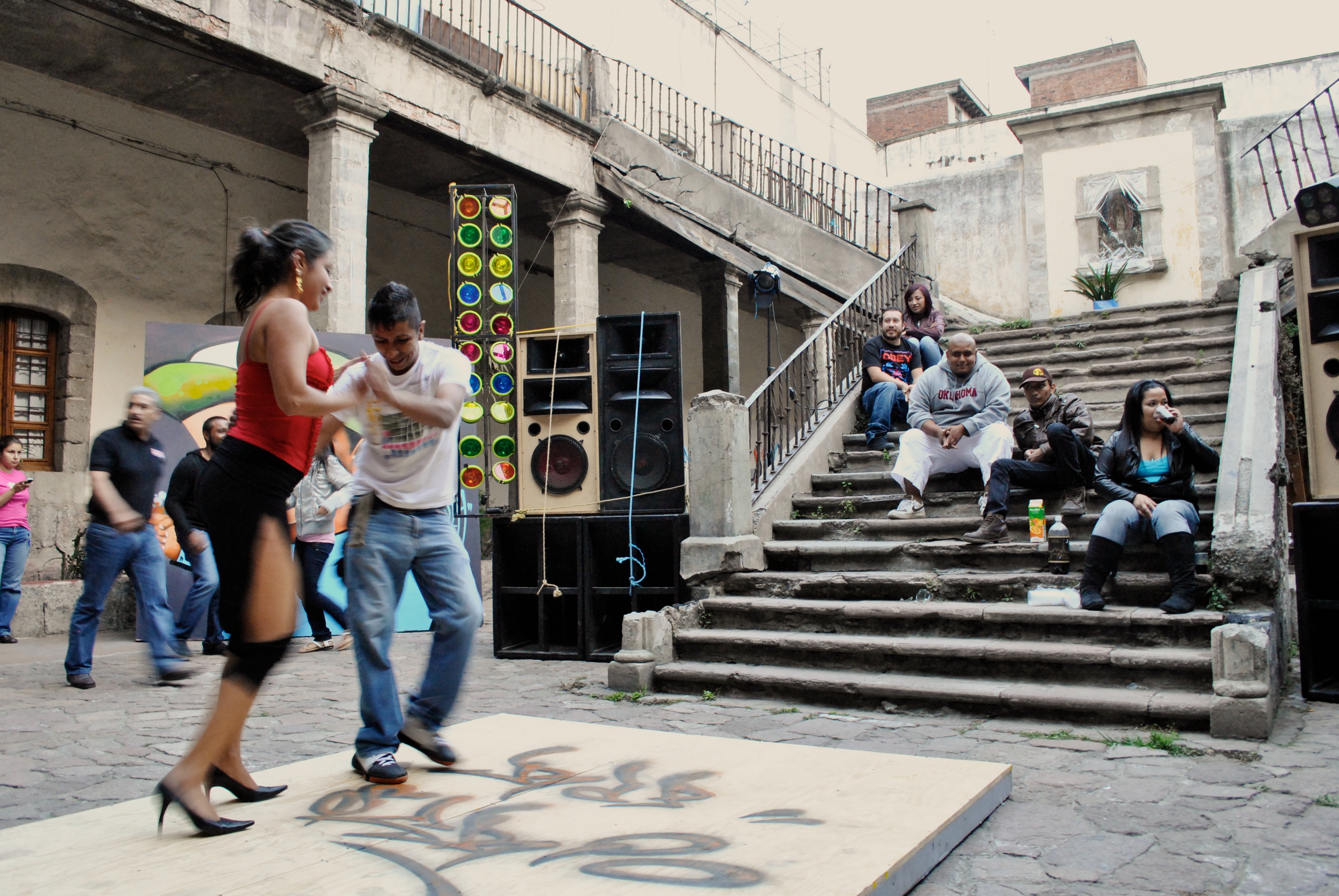Vecindad on:
[Wikipedia]
[Google]
[Amazon]
 ''Vecindad'' (
''Vecindad'' (
 ''Vecindad'' (
''Vecindad'' (Spanish
Spanish might refer to:
* Items from or related to Spain:
**Spaniards are a nation and ethnic group indigenous to Spain
**Spanish language, spoken in Spain and many countries in the Americas
**Spanish cuisine
**Spanish history
**Spanish culture
...
, 'neighborhood'; concept of householder, citizenship) is a deeply-rooted Hispanic concept with various meanings, depending on historical or geographical context. In Mexico, it is often used to refer to multifamily apartment dwellings converted from aristocratic residences, or designed in similar fashion.
History
In Iberia during theReconquista
The ''Reconquista'' (Spanish language, Spanish and Portuguese language, Portuguese for ) or the fall of al-Andalus was a series of military and cultural campaigns that European Christian Reconquista#Northern Christian realms, kingdoms waged ag ...
from Muslim rule, new towns were founded and to entice settlers, they were offered the status of ''vecinos'', prominent and respected residents and citizens. In colonial Mexico in the immediate conquest era, only encomenderos
The ''encomienda'' () was a Spanish labour system that rewarded conquerors with the labour of conquered non-Christian peoples. In theory, the conquerors provided the labourers with benefits, including military protection and education. In pr ...
, those holding grants of the labor and tribute of particular Indian communities, were granted the title of ''vecino''. As Spanish cities were founded in New Spain
New Spain, officially the Viceroyalty of New Spain ( ; Nahuatl: ''Yankwik Kaxtillan Birreiyotl''), originally the Kingdom of New Spain, was an integral territorial entity of the Spanish Empire, established by Habsburg Spain. It was one of several ...
, ''vecinos'' could petition the municipal council '' cabildo'' for a grant of land in the municipality to build a house and land outside the municipality to pursue economic activity. As the number of Spanish households increased, the term ''vecino'' expanded to mean male head of household and neighbor, and came to mean being a member of Spanish colonial society.
The word ''vecindad'' can also refer to a person's legal residence, in terms of a city, province, or state, not just a neighborhood. In Guatemala, there's a national ID referred to as ''carnet de vecindad'', not mattering the actual "neighborhood" but giving the person a legal document saying they are from that country. In parts of for a building containing several (often low-income oriented) housing units. It was originally a form of housing created from a residential subdivision of vacated elite housing in historic centers in Mexican cities, where rooms around a central patio were let to families who shared facilities (such as lavatories and/or kitchens) with the other tenants. Purpose-built ''vecindades'' were constructed in the early 20th century to meet the demand for central low-income housing and resembled the original ''vecindades'' by having small units and shared facilities. The term is now used ambiguously.
In some Latin American countries the "vecindades" are called "conventillos". The word is a derogative from "convento": cloister. The name comes from the similarity of the spatial distribution of the buildings: covered living spaces around an open court or "patio".
Important is the inherent social tissue of the "vecindad/conventillo". The dwellers form a complex communal unit with a varied array of social interrelationships. The outside world, very often, considers the inhabitants of a "vecindad" as a group of slum people and project on them their prejudices against the lower classes.
In the modern era, the idea of ''vecindad'' is debated in the European Union
The European Union (EU) is a supranational union, supranational political union, political and economic union of Member state of the European Union, member states that are Geography of the European Union, located primarily in Europe. The u ...
.Llorente, Mercedes Guinea. "La Política Europea de Vecindad y la estabilización del entorno próximo: el caso de Europa Oriental." Revista de Derecho Comunitario Europeo 12.31 (2008): 805-831.
References
{{ReflistFurther reading
*Amunátegui Perelló, Carlos Felipe . "Las relaciones de vecindad y la teoría de las inmisiones en el Código Civil." Revista de Derecho (Valparaiso) XXXVIII (2012): 77–120. *Beltrán, Clara López. "La buena vecindad: las mujeres de elite en la sociedad colonial del siglo XVII." Colonial Latin American Review 5.2 (1996): 219–236. *Esquivel Hernández, María Teresa. "El uso cotidiano de los espacios habitacionales: de la vecindad a la vivienda de interés social en la ciudad de México." Scripta Nova: revista electrónica de geografía y ciencias sociales 7 (2003). *Herzog, Tamar. "La vecindad: entre condición formal y negociación continua. Reflexiones en torno de las categorías sociales y las redes personales." Anuario IEHS: Instituto de Estudios histórico sociales 15 (2000): 123–131. *Llorente, Mercedes Guinea. "La Política Europea de Vecindad y la estabilización del entorno próximo: el caso de Europa Oriental." Revista de Derecho Comunitario Europeo 12.31 (2008): 805–831. *Mendoza, Edwin Monsalvo. "Ciudadanía, vecindad y sufragio en Cartagena 1810-1834." Historia y Memoria 6 (2013): 171–204. *Rodríguez-Cano, Rodrigo Bercovitz. "Vecindad civil y nacional." Anuario de derecho civil 36.4 (1983): 1149–1168. Colonial Mexico Architecture in Mexico